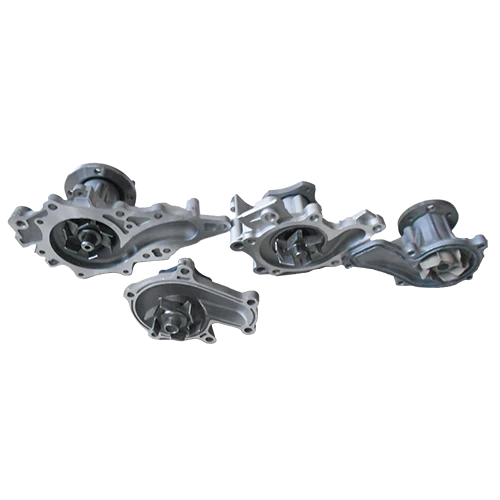Mobile:+86-311-808-126-83
Email:info@ydcastings.com
Optimization of Heat Treatment Processes for Aluminum Castings to Enhance Performance and Durability
Heat Treatment of Aluminium Castings
Heat treatment is a crucial process in the manufacturing and finishing of aluminium castings, employed to enhance their mechanical properties and performance characteristics. Aluminium castings, known for their lightweight and corrosion-resistant qualities, are commonly used in various industries including automotive, aerospace, and consumer goods. However, to maximize their potential, appropriate heat treatment methods must be applied.
The primary objective of heat treatment is to alter the microstructure of the alloy, improving its strength, ductility, and resistance to wear and fatigue. Heat treatment processes for aluminium castings typically involve three main steps solution treatment, quenching, and aging.
Solution Treatment
In the solution treatment phase, the casting is heated to a temperature that allows alloying elements to dissolve into the aluminium matrix. This temperature often ranges between 500°C and 550°C, depending on the specific aluminium alloy being used. The duration of this step can vary, typically lasting from a few minutes to several hours. The goal is to achieve a homogenous solid solution where all alloying elements are uniformly distributed.
Quenching
heat treatment of aluminium castings

Following solution treatment, quenching rapidly cools the casting, usually in water or oil, to lock the alloying elements in a supersaturated state. This fast cooling process is critical, as it prevents the formation of unwanted phases that could compromise the material properties. Proper quenching is vital to achieve optimal strength, but it must be carefully controlled to avoid warping or cracking of the casting.
Aging
The final step in heat treatment is aging, where the quenched casting is reheated to a lower temperature, typically between 150°C and 200°C. This process allows the supersaturated alloy to precipitate fine particles, strengthening the material through the age-hardening effect. Aging can be performed naturally at room temperature or artificially at elevated temperatures for faster results. The duration of aging also varies based on the specific alloy system and the desired properties.
Benefits of Heat Treatment
The benefits of heat treating aluminium castings are manifold. Enhanced mechanical properties such as increased tensile strength and improved hardness make heat-treated castings ideal for demanding applications. Additionally, heat treatment can improve fatigue resistance, ensuring that the components perform reliably under cyclic loads. Furthermore, it can assist in minimizing internal stresses, leading to less deformation during machining operations.
In conclusion, heat treatment is an essential process in the production of aluminium castings. By employing various methods such as solution treatment, quenching, and aging, manufacturers can significantly enhance the performance characteristics of aluminium castings. As industries continue to seek lighter and more durable materials, the role of heat treatment in aluminium casting will remain pivotal to advancements in technology and product innovation.
-
Understanding Metal Casting TechniquesNewsApr.02,2025
-
Understanding Exhaust Manifolds for Enhanced Engine PerformanceNewsApr.02,2025
-
The World of Metal FabricationNewsApr.02,2025
-
Key Components for Pump and Turbo EfficiencyNewsApr.02,2025
-
Essential Tools for Automotive Maintenance and RepairNewsApr.02,2025
-
Durable Valve Components for Effective Water ManagementNewsApr.02,2025











